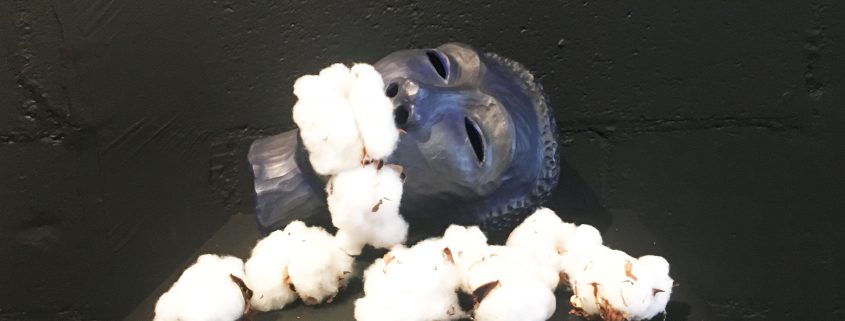Signifying Form showcases works of black female artists
Signifying Form, the latest exhibit at The Landing Gallery, is filled with the voices of the underrepresented. With works by Betye Saar, Maren Hassinger, Senga Nengudi, Alison Saar, Dominique Moody, Brenna Youngblood and Samella Lewis, curator Jill Moniz put together a collection that features the narrative sculptural works of black female artists between 1935 and 2016.
The works showcased are as unique as the artists who created them. Each aspect and element of their art speaks and is derived from different concepts, ranging from historical references to social and political commentary.
“I wanted to show the magic of what happens when you signify form,” Moniz said. “The Western canon said that modern sculpture was devoid of narrative, but these women viewed their own narrative into the forms themselves that they created. So, I wanted to show how that worked, despite what the West believes.”
The many different black female voices, both historical and contemporary, come together to create a moving and powerful exhibit.
Featured artist Dominique Moody was born in Germany to a military family. At the age of 28, Moody became legally blind from genetic muscular degeneration. Afterwards, she shifted her work from two-dimensional illustrations to three-dimensional sculptures. Moody’s piece “Sweat Equity” touches upon the idea of unpaid labor and has elements inspired by African diaspora folklore. It is made from the remnants of found objects such as multicolored glass, twigs and a slew of other materials.
Brenna Youngblood’s wooden sculpture “Untitled” features mathematical symbols and fractions. According to Lisa Henry, the independent curator who wrote the foreword on Brenna Youngblood’s work, Youngblood’s wooden mathematical signs are a reflection of the universal language of mathematics.
“Brenna gives us abundance and minimalism,” Henry said, “both math and poetry.”
Contemporary art veteran Betye Saar has three pieces within the exhibit. “Crimson Captive” is a powerful visual of a red Victorian birdcage with a woman inside, draped in heavy chains. The crow symbolizes the oppression that the black community faced under Jim Crow laws. The piece pays homage to Maya Angelou’s autobiography I Know Why the Caged Bird Sings.
Alison Saar, another artist whose work is featured, conveys the vulnerability, dignity, beauty and humanity of black women through her art. Her sculpture “Cotton Eater (head)” is one of the most powerful pieces within the exhibit. It is of a black woman’s head, tilted on its side, with cotton overflowing in her mouth. The woman, with her eyes appearing gouged out, is silenced into a state of constant oppression.
“Alison likes to make heads as a representation of the woman,” Moniz said. “She consumes and is consumed by cotton. She is pregnant with it although it is not of her.”
Featuring Allison Saar’s work was very important to Moniz, as she is one of many black female artists who have not been recognized in the mainstream art community.
“Black women are at the bottom of the art market,” Moniz said. “[I focused on black women] precisely because they are unrepresented. I wanted to show the arc of 80 years of making work for themselves and for each other and what that looks like.”
Exhibits such as Signifying Form are attempting to promote black female artists’ participation in underground and mainstream art conversations.
Signifying Form will be on display at the Landing Gallery until July 1.

